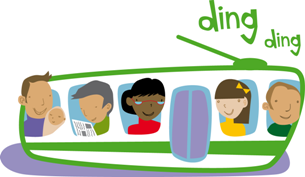FROM THE AGE: MELBOURNE'S struggling bus system will be revamped next year when the state government replaces five separate bus companies that run much of the network with a single operator.
It is hoped the reform will lead to big improvements for the network, which is the least used and the most heavily subsidised of all the state's public transport modes.
Government contracts are set to expire next year with five different bus operators that run about 30 per cent of the network, and the government has launched a worldwide tendering process to replace them with a single player.
Advertisement: Story continues below
The head of Public Transport Victoria, Ian Dobbs, said the new deal would improve the standard of service on Melbourne's buses.
''No Victorian government has ever put out this much of the bus network for tender at one time and this is a significant step in PTV's plan to improve public transport for the people of Melbourne,'' Mr Dobbs said.
A report by the Public Transport Users Association, provided to The Age, has found that the state's bus network is indeed in dire need of reform, with low patronage, infrequent timetabling and mostly meandering, inefficient routes.
The association has called for bus routes to be redesigned to run more directly from point to point and to better connect with other transport modes.
''The bus system is incredibly confusing for most people, as well as providing mostly infrequent services, which makes it not very useful to the vast majority of Melburnians,'' association president Daniel Bowen said.
The study compared the distances Melbourne's buses travel on their routes to the most direct routes possible by road and found that on average, bus routes were 70 per cent longer. Many routes, particularly in the western suburbs, were more than twice as long.
Mr Bowen said more buses could run more often if their routes were straightened out.
''Indirect routes take longer for passengers, and need more buses and more drivers for the same service frequency,'' he said.
The study found that Melbourne's buses compared poorly with other major Australian cities, carrying about half as many passengers per kilometre travelled as Sydney's buses did, and about a third of Brisbane's.
The state government spends much more money per passenger subsidising buses than it does trains or trams.
It paid bus operators $525 million last financial year, which equalled $4.95 for each individual bus journey. This compared with $3.65 in subsidies for each train ride and $1.94 for each tram trip. This year it expects to pay $571 million in bus subsidies.
Bus operators' subsidies are based on the number of hours spent on the road and kilometres driven, which creates an inherent incentive to design long routes, the report says.
But Public Transport Victoria said bus routes had to provide a balancing act between delivering speedy cross-town travel and serving locals on shorter trips. It said there were no plans to alter subsidy arrangements.
What ideas do you have for better buses?



No comments:
Post a Comment